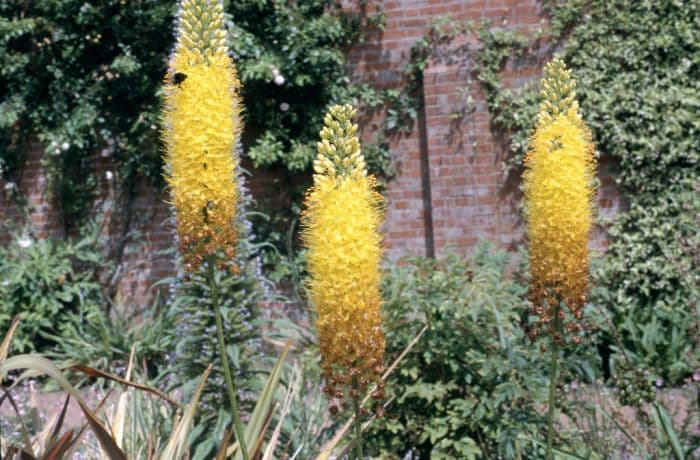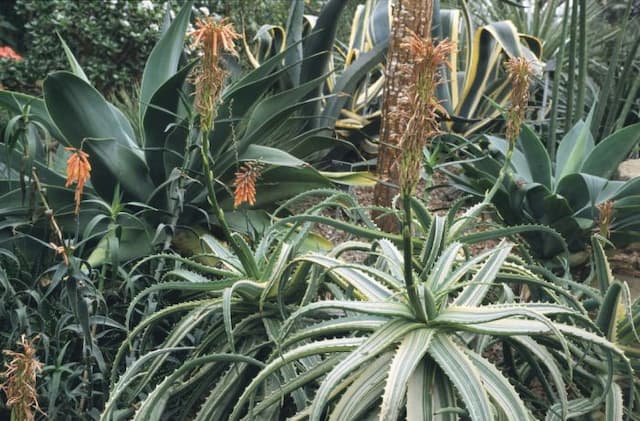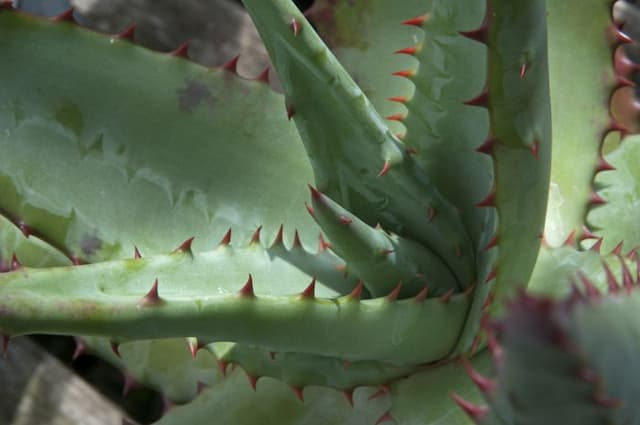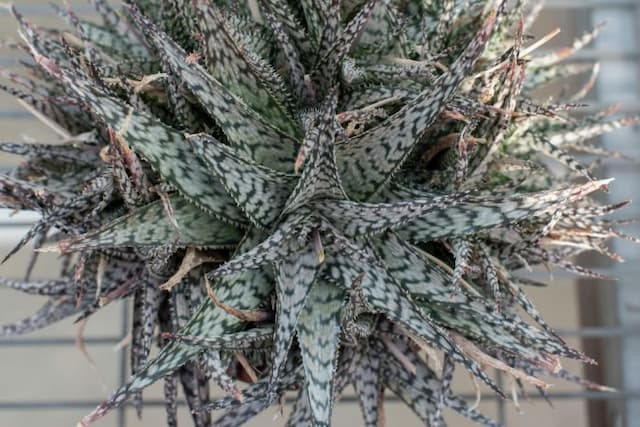Foxtail Lily Eremurus stenophyllus

ABOUT
Commonly known as the Foxtail Lily, this plant is recognized for its striking spire-like flowers. The blooms are typically yellow or golden in color and form dense clusters along the tall, pole-like flowering stem which rises above the foliage. Each flower on the spike is shaped like a star and together they create an impressive, brush-like display that adds vertical interest to the garden landscape. The leaves of the Foxtail Lily are narrow, long, and grass-like, with a greyish-green to green coloration that contrasts beautifully with the vibrant tones of the flowering spike. Arranged mainly at the base, these leaves often give the impression of a lush, green fountain from which the flowering stem emerges. The overall appearance of the Foxtail Lily is stately and elegant, with its dramatic floral display often acting as a magnet for pollinators such as bees and hummingbirds. This plant is appreciated for its ability to add a burst of color and height to garden beds and borders, lending a distinctive architectural quality to its surroundings.
About this plant
 Names
NamesFamily
Asphodelaceae.
Synonyms
Foxtail Lily, Desert Candle, Narrow-Leaved Foxtail Lily.
Common names
Eremurus bungei, Henningia bungei, Eremurus bobrovii, Asphodelus stenophyllus
 Toxicity
ToxicityTo humans
Foxtail lilies, known botanically as Eremurus stenophyllus, are not commonly listed as toxic to humans. There is limited information on the plant's toxicity, but it is generally not considered poisonous. Therefore, there are no well-documented symptoms of poisoning from ingesting any parts of the foxtail lily for humans. However, as with many plants, it is still advisable to avoid ingesting parts of plants that are not meant for consumption, as they may cause gastrointestinal discomfort or allergic reactions in some individuals.
To pets
Foxtail lilies, or Eremurus stenophyllus, do not have a reputation for being toxic to pets. There is no substantial evidence or documented cases of pets being poisoned by foxtail lilies, and they are not known to be hazardous to dogs, cats, or other household pets. Therefore, ingestion of parts of the foxtail lily is not expected to cause severe symptoms of poisoning in pets. As with all non-food plants, caution should still be exercised to prevent pets from ingesting it, as it could potentially cause mild stomach upset due to the non-digestible plant matter.
 Characteristics
CharacteristicsLife cycle
Perennials
Foliage type
Deciduous
Color of leaves
Green
Flower color
Yellow
Height
3-4 feet (90-120 cm)
Spread
1-2 feet (30-60 cm)
Plant type
Bulb
Hardiness zones
5
Native area
Iran
Benefits
 General Benefits
General Benefits- Ornamental Value: Eremurus stenophyllus, also known as the Foxtail Lily, adds dramatic height and striking colors to gardens and landscapes with its tall spikes of yellow or orange flowers.
- Drought Tolerance: The Foxtail Lily is well-adapted to dry conditions, making it an excellent choice for xeriscaping and water-wise gardens.
- Attracts Pollinators: The blooms of the Foxtail Lily attract bees, butterflies, and other pollinators, which are essential for the pollination of many other plants.
- Low Maintenance: Once established, the Foxtail Lily requires minimal care, making it suitable for gardeners who prefer low-maintenance plants.
- Seasonal Interest: The dramatic flowers of the Foxtail Lily bloom in late spring to early summer, providing a seasonal interest in the garden during this time.
- Resistant to Pests: The Foxtail Lily is not commonly affected by pests, making it a resilient addition to the garden without the need for chemical treatments.
- Architectural Structure: The tall and slender form of the Foxtail Lily's flower spikes adds an architectural element to garden designs and flower arrangements.
- Naturalizing: The Foxtail Lily can spread and naturalize in suitable conditions, gracefully filling up spaces in the garden over time.
 Medical Properties
Medical PropertiesThis plant is not used for medical purposes.
 Air-purifying Qualities
Air-purifying QualitiesThis plant is not specifically known for air purifying qualities.
 Other Uses
Other Uses- Eremurus stenophyllus, commonly known as foxtail lily, can be used as a natural dye source. The various parts of the plant, such as roots and flowers, might be used to produce color for textiles and crafts.
- The plant's tall and striking flower spikes make it an excellent choice for creating vertical accents in floral arrangements and cut flower bouquets.
- In garden design, foxtail lily can serve as a marker plant to signal the transition between different garden rooms or areas due to its height and distinctive form.
- The dried seed pods of foxtail lily can be used in arts and crafts for decoration or as part of homemade potpourri mixes for their interesting shapes and textures.
- The stalks of the foxtail lily, being sturdy and tall, can be used as natural stakes for supporting other, more delicate plants in the garden.
- The plant's dramatic appearance has inspired artists and photographers, making it a frequent subject for botanical illustrations and artistic compositions.
- During educational activities, the foxtail lily can be used as an example to teach about plant adaptation to dry environments, given its origin from arid regions.
- In garden-themed events, such as plant fairs or garden shows, the foxtail lily's distinctive blooms can serve as eye-catching centerpieces or decorative motifs.
- Due to their unique and attractive appearance, foxtail lilies often feature in themed gardens, such as desert or xeriscape gardens, highlighting water conservation and climate-appropriate planting.
- Landscape photographers may use the distinctive profile of the foxtail lily to add interest and a sense of scale to natural landscape photographs, especially when shooting in garden settings or capturing silhouettes at dusk or dawn.
Interesting Facts
 Feng Shui
Feng ShuiThe Eremurus stenophyllus, more commonly known as the Foxtail Lily, is not used in Feng Shui practice.
 Zodiac Sign Compitability
Zodiac Sign CompitabilityThe Foxtail Lily is not used in astrology practice.
 Plant Symbolism
Plant Symbolism- Persistence: The foxtail lily, as Eremurus stenophyllus is commonly known, grows in harsh conditions and demonstrates an ability to thrive despite challenging environments, symbolizing endurance and perseverance.
- Resilience: Its tolerance to dry soils and climates represents resilience and the capacity to recover from adversity.
- Strength: The tall and striking presence of the foxtail lily is often associated with strength and the beauty of standing tall through trials.
- Pride: With its impressive height and eye-catching blooms, the foxtail lily can symbolize pride, not just in appearance but in achievements and personal growth.
- Loneliness or Solitude: As the foxtail lily can stand isolated in its natural landscape, it may also represent loneliness or the value of solitude in its symbolism.
- Rarity and uniqueness: The foxtail lily is not commonly found everywhere, which can symbolize the uniqueness and rare beauty in life or characteristics that stand out in a person.
 Water
WaterFoxtail lilies, or Eremurus stenophyllus, prefer even moisture during their growth and blooming period, typically in spring and early summer. It is best to water them once a week with about 0.25 gallons per square foot, as deep watering encourages deep root development. After flowering, when the foliage begins to yellow, reduce watering to help the plant enter dormancy. Avoid overwatering as these plants are prone to rot in soggy soil. During the winter dormant period, watering should be minimal, just enough to prevent the soil from completely drying out.
 Light
LightFoxtail lilies thrive in full sun locations where they can receive at least 6 to 8 hours of direct sunlight daily. They perform best when planted in a south-facing garden spot that is free from the shade of larger shrubs or trees, as ample sunlight is crucial for their growth and flowering.
 Temperature
TemperatureFoxtail lilies prefer regions with cold winters and hot summers, as they need a period of winter dormancy. They can survive winter temperatures as low as -20 degrees Fahrenheit and summer temperatures well above 100 degrees Fahrenheit. The ideal growing temperature for Foxtail lilies ranges from 50 to 75 degrees Fahrenheit during the growing season.
 Pruning
PruningPruning Foxtail lilies involves removing the flower stalks once blooming has finished, which typically occurs in late summer. This helps to prevent self-seeding and encourages more vigorous growth for the next season. The leaves should be allowed to die back naturally and can be cleared away once they have completely browned and dried in the fall.
 Cleaning
CleaningAs needed
 Soil
SoilFoxtail Lilies require a well-drained soil mix with a pH of 6.0 to 8.0. A combination of sandy soil, compost, and a small amount of bone meal is ideal to provide the proper nutrients and drainage.
 Repotting
RepottingFoxtail Lilies should be repotted only when they have outgrown their current space. This is typically every 3 to 4 years, as they prefer not to be disturbed.
 Humidity & Misting
Humidity & MistingFoxtail Lilies thrive in average outdoor humidity levels and do not require special humidity considerations beyond natural climate conditions.
 Suitable locations
Suitable locationsIndoor
Ensure full sunlight and well-draining soil mix.
Outdoor
Plant in full sun, well-draining soil, and provide winter mulch.
Hardiness zone
5-9 USDA
 Life cycle
Life cycleEremurus stenophyllus, commonly known as the Foxtail Lily or Desert Candle, begins its life cycle when its seeds are sown in well-drained soil during late summer or fall. After a period of cold stratification, which is necessary for germination, seedlings emerge in spring, developing narrow, strap-like leaves. The plant establishes a deep root system with a central, fleshy tuber-like rootstock which helps it survive periods of drought. In late spring or early summer, Foxtail Lily undergoes its most notable phase, producing tall, dense spikes of yellow to orange flowers that can reach up to several feet in height. After pollination, typically by bees and other insects attracted to the flowers, the plant sets seed, which are then dispersed by the wind or sometimes by animals. With the onset of autumn, the foliage dies back and the plant enters a dormant phase, relying on its rootstock to survive the winter until the cycle begins anew the following spring.
 Propogation
PropogationPropogation time
Early spring
The Eremurus stenophyllus, commonly known as the Foxtail Lily, is commonly propagated by dividing the tuberous roots. The best time for this is in late summer after the foliage has died back, typically around August to September. To propagate Foxtail Lily by division, carefully lift the plant from the soil and gently separate the individual tubers, making sure that each division has at least one growth point. These tubers can then be replanted immediately in well-draining soil at a depth of about 4 to 6 inches (10 to 15 centimeters), spaced about a foot (30 centimeters) apart to accommodate their tall and widespread growth. It’s important to water them lightly after planting to help settle the soil around the roots.









